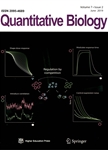版权所有:内蒙古大学图书馆 技术提供:维普资讯• 智图
内蒙古自治区呼和浩特市赛罕区大学西街235号 邮编: 010021

作者机构:Center for Brain-Like Computing and Machine IntelligenceDepartment of Computer Science and EngineeringShanghai Jiao Tong UniversityShanghai 200240China MOE-Microsoft Key Laboratory for Intelligent Computing and Intelligent SystemsShanghai Jiao Tong UniversityShanghai 200240China Center for Brain-Like Computing and Machine IntelligenceDepartment of Computer Science and EngineeringShanghai Jiao Tong UniversityShanghai 200240China Department of Computer Science and EngineeringShanghai Maritime UniversityShanghai 201306China
出 版 物:《中国电气与电子工程前沿》 (FRONTIERS OF ELECTRICAL AND ELECTRONIC ENGINEERING IN CHINA)
年 卷 期:2011年第6卷第1期
页 面:56-71页
学科分类:0202[经济学-应用经济学] 02[经济学] 020205[经济学-产业经济学]
基 金:This work was partially supported by the National Natural Science Foundation of China(60773090 90820018) the National Basic Research Program of China(2009CB320901) the National High-Tech Research Program of China(2008AA022315) the Science and Technology Commission of Shanghai Municipality(09511502400)
主 题:imbalanced data Min-Max modular network(M3-network) prior knowledge parallel learning support vector machine (SVM)
摘 要:Imbalanced data sets have significantly unequal distributions between *** between-class imbalance causes conventional classification methods to favor majority classes,resulting in very low or even nO detection of minority classes.A Min-Max modular support vector machine(M3-SVM)approaches this problem by decomposing the training input sets of the majority classes into subsets of similar size and pairing them into balanced two-class classification *** approach has the merits of using general classifiers,incorporating prior knowledge into task decomposition and parallel *** on two real-world pattern classification problems,international patent classification and protein subcellar localization,demonstrate the effectiveness of the proposed approach.